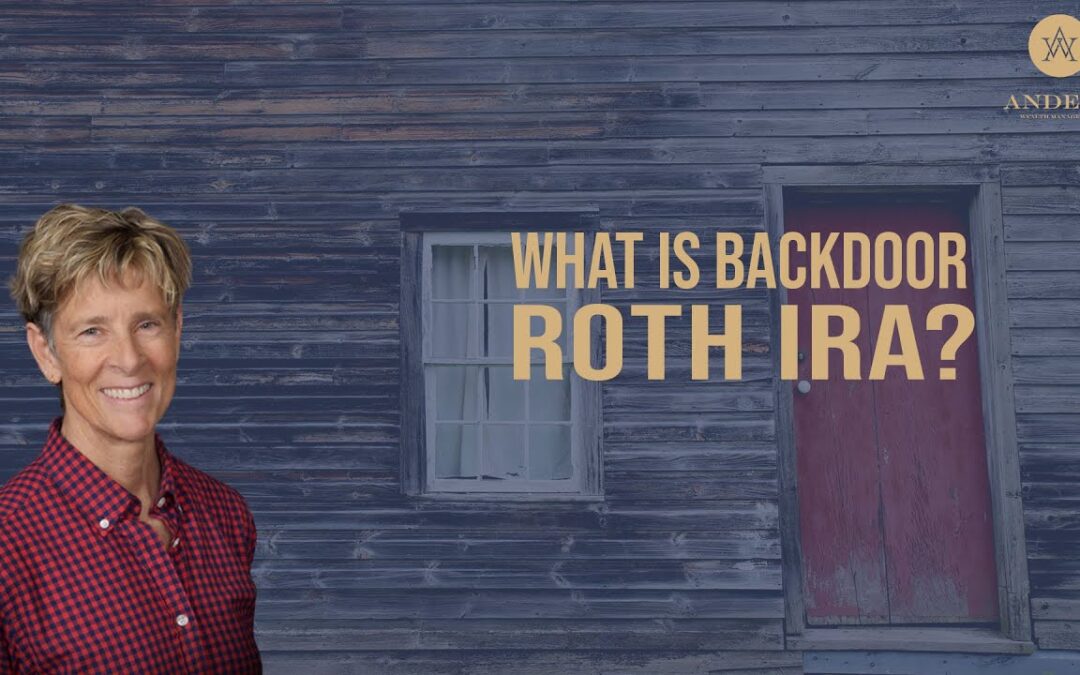
Roth IRA Conversion – What You Need to Know Before Converting
Hi there and thank you for stopping by. Today I’m going to talk about converting dollars from your traditional IRA to your Roth account, also known as Roth IRA conversions. My name is Tina Anders. I am the fee only Certified Financial Planner for my wealth management firm, located here in Petaluma, California, Anders Wealth Management serving clientele primarily in the Sonoma and Marin counties. Thank you again for stopping by.
So, let’s talk about Roth conversions. So, Roth conversions turn traditional IRA dollars into Roth IRA dollars. Which can bring long term tax benefits, but you may face a tax bill in the year you convert. Why would you do a Roth conversion? You would do a Roth conversion to have avoid having to take RMD’s, also known as a required minimum distributions at age 72 mandated. And then you would end up paying ordinary income taxes on the RMD’s. So, a Roth conversion allows you to avoid that, also to avoid having to pay any taxes on your Roth IRA distributions, moving traditional to Roth. And then also, if you think your tax rate in retirement will be higher than it is now. Those are some reasons to do a Roth conversion.
Here’s how it works. Say you have a traditional IRA funded. Move your traditional IRA dollars, the desired amount, to your Roth IRA. Pay taxes on your IRA contributions and gains. So, when you move money from a traditional IRA to a Roth IRA, you will be taxed. If the contributions to the traditional IRA are tax deductible, you will be taxed on the money that has moved over from traditional to Roth.
To reduce the taxes you’ll owe on the rollover. Time your conversion in a year for instance that you’re in a lower tax rate, perhaps your income is going to drop or has dropped, and you anticipate a lower tax bracket in that year. Good time to do a Roth conversion or when your traditional IRA account is down. Because, for instance, in the COVID volatile market, perhaps your IRA balance is lower. Thereby when you move the balance over to the Roth, it’s not as high as it would have been, so your tax liability will also be reduced. Also, time it as you can afford to pay the taxes. You don’t have to convert your full balance. Think about converting only the mount on what you can afford paying taxes.
So, how do you convert traditional IRAs to Roth IRAs? There are three different ways. One is an indirect rollover, in which case, you personally and I don’t recommend this. But you personally take a distribution from your traditional IRA, and then you contribute it to your Roth IRA within a 60-day window. Be careful, I don’t recommend doing it this way. That is one way you can do it.
Another way is a trustee to trustee transfer. You tell your financial institution that has your traditional IRA to transfer money directly to your Roth IRA, perhaps at a different institution. That’s a trustee to trustee or direct rollover.
And another way to do a Roth conversion is to do a same trustee transfer which if your traditional IRA and your Roth IRA are held at the same institution, just call your institution and tell them I want to roll or convert this much from my traditional to my Roth, and they will handle that for you.
So, a Roth IRA, conversion might be wrong for you, if you lack the cash to pay the likely tax bill is generated by the conversion. Some people pay the tax bill with part of the conversion, the converted balance, but that sacrifices some of the tax-free investment growth.
If you’re under 59 and a half, you might not want to do a Roth conversion because you might have to pay a 10% penalty on the money that you convert. You also might not want to do a Roth conversion if you need the money in the next five years. Because withdrawals of money from the conversion of a traditional IRA or a 401k to a Roth are subject to a five-year waiting period to avoid a penalty. So, each conversion or rollover you make is subject to a separate five year waiting period. So, be careful about that.
Another reason not to do on is if the rollover will subject you to a higher marginal tax bracket in the year that you make the conversion. So I have clients send me a password protect protected PDF of their recent tax returns, so that we can pop it into my software to project how much they can afford to convert to a Roth IRA without putting them into a higher tax bracket. So, please be sure to run these projections before you make your decision. Because a larger than necessary tax bite can really hurt. In some a Roth conversion could be right for you if you like the idea of your investment earnings growing tax free. If you want the ability to lower your taxable income in retirement. If you think maybe your tax rate in retirement will be higher than it is now. Or and or if you want to avoid required minimum distributions, which the IRS mandates at age 72 from a traditional IRA.
Thank you for stopping by. If you have a comment or a question, if there’s a topic on which you’d like me to do a video, please comment below and I will do my best to accommodate you. Tina Anders here in your corner. Thanks again.

